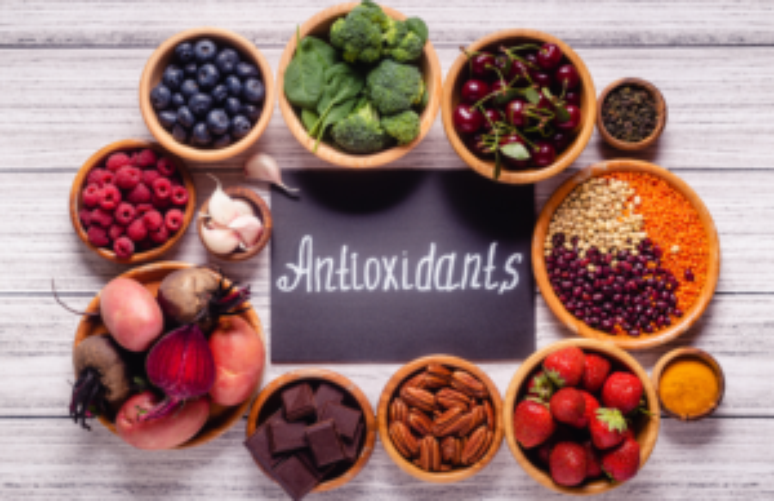Learn about foods rich in antioxidants and the effects of this diet on health.
Antioxidant foods are essential for fighting disease and promoting overall well-being. Found in many sources of consumption, these foods have several benefits in the body, highlighting the importance of a healthy and balanced diet. The oxidation process is natural for the body, but it can be influenced by excessive alcohol consumption, excessive use of medicines, an incorrect diet, among other habits that are not good for the human body. Therefore, eating foods rich in antioxidants is one way to protect your genetic material.
html[data-range=”xlarge”] figure image img.img-e3544a371eae257ae110bbbf6d297189vzcr7tzx { width: 774px; height: 501px; }HTML[data-range=”large”] figure image img.img-e3544a371eae257ae110bbbf6d297189vzcr7tzx { width: 548px; height: 354px; }HTML[data-range=”small”] image figure img.img-e3544a371eae257ae110bbbf6d297189vzcr7tzx, html[data-range=”medium”] figure image img.img-e3544a371eae257ae110bbbf6d297189vzcr7tzx { width: 564px; height: 365px; }HTML[data-range=”small”] .article__image-embed, html[data-range=”medium”] .article__image-embed { width: 564px; margin: 0 auto 30px; }
What is an antioxidant food?
Antioxidant foods are responsible for neutralizing free radicals in the body. This means they reduce oxidative damage to cells in the body. Free radicals are nothing but unstable and reactive molecules. They cause damage to the cells of the body, increasing the risks of chronic, cardiac, neurodegenerative diseases, among others. With antioxidant foods it is possible to strengthen the immune system. The result is the reduction of inflammation in the body and the protection of cells from oxidative stress, promoting greater health for the individual.
What are Antioxidant Foods?
There are many antioxidant foods. For example, have you ever heard the phrase: the more colorful the dish, the healthier it is? While the statement is often taken as a joke, it is true. The color on the plate represents the variety of food groups represented in the food. Therefore, the more colorful, the greater the variation. The more variation your dish has, the more antioxidant foods there will be. In general, it can be said that foods rich in antioxidants are those with the highest amount of vitamin A, C or E. This group also includes beta-carotene, minerals such as selenium and zinc, and amino acids. Therefore, fruits, vegetables and nuts are the greatest sources of antioxidants that can be found. Being rich in antioxidants:
- Fruits: Berries – such as blueberries, raspberries, strawberries and blackberries – grapes, apples, cherries, oranges, lemons, pineapples, watermelons, kiwis and pomegranates.
- Vegetables: Spinach, broccoli, kale, Brussels sprouts, kale, peppers, carrots, tomatoes, sweet potatoes, squash, beets, and garlic.
- Nuts and Seeds: Almonds, cashews, walnuts, pistachios, chia seeds, flax seeds, pumpkin seeds, and sunflower seeds.
- Whole grains: oats, quinoa, barley, brown rice and whole wheat.
- Legumes: black beans, red beans, lentils, chickpeas and peas.
- Tea: green tea, black tea, white tea and hibiscus tea.
- Spices: cinnamon, saffron, cloves, oregano, ginger and pepper.
- Dark Chocolate: Dark chocolate with a high cocoa content (70% or more) contains antioxidants, especially flavonoids.
- Red Wine: Red wine, when consumed in moderation, can provide antioxidants such as resveratrol.
Among the most common antioxidant foods we have:
1. Oatmeal
It helps improve blood circulation, hinders the absorption of fats from the intestines and eliminates toxins. It also helps structure the skin, minimizing the appearance of cellulite. How to consume:
- Milk-based oatmeal porridge;
- Vitamins with oats — increases the amount of fiber and becomes more nutritious;
- Bread, cakes and biscuits – in place of wheat flour;
- Accompaniment for fruit – such as banana, apple, papaya, among others.
2. Olive oil
Rich in monounsaturated fats, it has antioxidant and anti-inflammatory properties. A maximum of two tablespoons of olive oil should be consumed during the day. How to consume:
- Substitute oil in recipes;
- Drizzle olive oil into salad;
- Make a toast.
3. Papaya and pineapple
Two fruits with anti-edema properties, they help digest proteins and act against allergies capable of stimulating the formation of fat cells.
4. Pisces
Fish, such as tuna, sardines and salmon, are excellent sources of Omega 3, essential fats to fight against cases of osteoporosis. Whether grilled, fried or diced, fish can be incorporated into foods in a variety of ways. Therefore, they are an important source of protein to diversify the consumption of antioxidant foods.
5. Saffron
The main active compound in turmeric is curcumin, which is also responsible for its characteristic yellow-orange color. Curcumin has antioxidant and anti-inflammatory properties. How to consume:
- Seasoning food – such as rice, meat, among others;
- saffron tea;
- Make smoothies by blending turmeric with fruits like banana, pineapple, mango, and orange.
What are the effects of antioxidant foods on health?
Foods rich in antioxidants produce many positive health effects. They are used to prevent chronic diseases, cardiovascular diseases, some types of cancer and even fight against Alzheimer’s cases. Among the main benefits of foods rich in antioxidants, it is possible to highlight:
Strengthen the immune system
Antioxidants play an important role in protecting the immune system. They can help boost immune function, improving the body’s response to infection and disease.
Slows down premature aging
By fighting oxidative stress, foods rich in antioxidants delay premature aging. This happens because oxidative stress is primarily responsible for the premature aging of cells and tissues. Therefore, antioxidant foods reduce the damage caused by sun exposure, pollution and other environmental factors. For this reason, the skin remains younger and healthier.
Improved eye health
Antioxidants like lutein and zeaxanthin, found in green leafy vegetables, can help protect eye health. Thus, they reduce the risk of age-related eye diseases such as macular degeneration and cataracts.
Maintaining cardiovascular health
Certain antioxidants, such as flavonoids, found in fruits and vegetables, have been linked to a reduced risk of cardiovascular disease. They may help improve heart health by reducing inflammation, improving blood vessel function, and reducing the oxidation of LDL cholesterol, known as “bad” cholesterol. To enjoy the benefits of foods rich in antioxidants and have a better diet, always try to choose natural foods. Asking for help from a profession is also a great way to have a food routine more in line with your needs. Do not forget! In addition to eating, it’s also important to invest in exercise and a good sleep routine to have a healthier life.
Source: Terra
Ben Stock is a lifestyle journalist and author at Gossipify. He writes about topics such as health, wellness, travel, food and home decor. He provides practical advice and inspiration to improve well-being, keeps readers up to date with latest lifestyle news and trends, known for his engaging writing style, in-depth analysis and unique perspectives.








